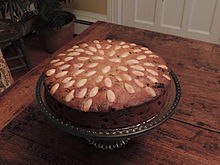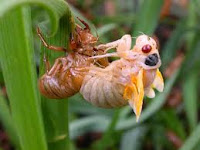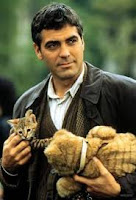The long-leggedy fly that goes bump in its flight is actually an adult crane fly as opposed to the mosquito hawk—a mosquito that kills the larvae of other mosquitoes.
The crane fly adult doesn’t eat mosquitoes or much of anything else. Though not a hoax on the same level as jokesters purposefully impersonating Sasquatch by wearing gorilla suits and leaving humongo faux footprints, we humans have embraced this hoax, taking to heart the crane fly/mosquito hawk myth. We want to believe this fragile, clumsy, goofy bug is a hero capable of silencing the incessant whine of the disease-bearing mosquito. But he isn’t, never has been, and is anatomically incapable of killing or eating a mosquito.
We’re all too personally familiar with the crane flies that arrive at the first sign of spring in clouds of large, slender flapping wings and spindly, dangly legs, bouncing like helium balloons off walls and ceilings. Even if we don’t know them as crane flies—an attribution derived from their resemblance to the birds of the same name with long legs and slow flight—we know them. Their throngs rise up and awkwardly air dance in front of and around us as we stroll through high grass.
They love light, like their moth and June bug compatriots, and hover near porch lights and windows opening into our private spaces, which they unintentionally invade as they clamor for the lights. Fragile body parts are often left behind on their careening paths as they try to maneuver through the obstacle courses our homes present.
Many of us tolerate the gentle giants and practice a “catch and release” policy, catching them gently so as not to snap off any appendages and watching them wobble off when set free outside. Others detest them for their “distractor factor”: tickling our shoulders, flying in front of our faces, and cluttering up our homes with bits and pieces of themselves lost in sloppy flight. Some of us even suffer from crane fly phobia, thinking they are monstrously inflated Frankensteinian mosquitoes that viciously pierce skin and suck blood. Ignorance isn’t always bliss.
Crane flies do look like gargantuan mosquitoes, but aren’t. Both are members of the same insect order, Diptera, classifying them as two- (di) winged (pteron) flies with two functional wings and two haltares, knobbed lesser wings that flap and act as gyroscopes to control body rotation. Maybe his haltares are too small for the crane fly’s big body, unable to provide him complete control. He can, however, stand on water without sinking because of the structure of fine waterproof hairs on his body.
The order is divided into a multitude of species of which 1,500 are in North America. Some species have spongy mouth parts to soak up liquids, and some have piercing/biting mouthparts, which is the major factor separating crane flies and their grubbier cousins the house flies from mosquitoes and horse flies. The crane fly can neither bite nor sting. The female’s abdomen ends in a pointed ovipositor looking suspiciously like a stinger, but it isn’t. No biting, no stinging, no problem.
Just as dramatically as they came, they’re gone. A crane fly’s adult life is tragically short, lasting two to fifteen days after hatching, depending on environment; however, it’s long enough to mate. A female gets a prowling male’s attention by crossing a pair of her six long, slender legs, shimmying her wings, which are larger than his, and winking a big compound eye. Flies’ compound eyes have many lenses allowing them to see in an almost 360 degree range, so the male gets an eyeful and is smitten. A man of few words, his actions speak louder than words. Soon the pair is locked in an embrace of sorts hazardous to fragile body parts.
You can tell male from female, if you’re interested. The male’s slender abdomen is rounded, while the female’s may be extended because she carries eggs, tapering into an ovipositor. The male’s flight pattern is a wonky rising and falling wave of spirals, but the female’s flight is controlled and straight. After mating, the male wanders off to die as the female carefully shoots eggs out of her ovipositor into moist soil or water, depending on the species. Exhausted, she dies too. Flight periods for each crane fly species in North America last twenty-five to thirty days with different species active at different times. When the time’s up crane flies are still with us but in another form.
Eggs hatch, becoming larvae called “leather jackets” due to their brown, smooth but tough outer cuticle. With distinctive head capsules and mouths, they make up for their parents’ lack of appetite. Most adults consume nothing; but their offspring live to eat. They devour decaying wood and vegetation, shoots, and roots below ground. They will ooze out at night to eat grass, flowers, fruits, and veggies.
Our native crane larvae cause only minor damage, but the European crane fly that invaded our continent in the 1950s now lives in the northwestern U.S. and is a significant, formidable pest that destroys crop and grass roots. Over winter, eating ceases as overfed larvae doze. Between winter and spring, they find protected places and weave cocoons around themselves like do-it-yourself mummies that morph into the slender adult crane flies just in time for spring.
So what’s the point, the raison d’être, of these flies that don’t eat mosquitoes? You could ask the same about us, but that’s another issue. Crane flies play an environmentally important role. Their larvae decompose organic litter lying around on the bottom of streams and on forest floors, helping enrich the soil and enhancing habitats of other creatures. They’re also meals for birds, reptiles, amphibians, other insects, and fish. Because fish love them (particularly trout), they’re good fishing bait and are models for numerous artificial lures, thus enhancing the pleasure of sporty fishermen. They don’t bite, draw blood, or sting. They may be bothersome due to swarming numbers, but they’re in evidence for so little time because their lives fly by so swiftly. So what’s the point of not wanting them to exist?
When the larvae produced by the last swarm of crane flies mature and you become weary of dodging them, when a silky wing brushes your skin, try a little tenderness. It’s good for your karma if nothing more.
Lucile isn’t ashamed to admit that she actually likes crane flies for their gentle absurdity and does practice “catch and release” in Vicksburg, Mississippi. She’s also not ashamed to admit she has a personal vendetta against their cousins, the houseflies, and keeps a seasonal body count of those thwacked with her lethal dishtowels.
--------------------------------
IN OTHER NEWS FROM THE NATURAL WORD: Carpenter Bees: When dealing with these wood-lovers, the best offense is a good defense OR Fireflies in Summer:The delightful light displays of these evening companions are enjoyed far less often these days. OR Snakes on Broadway: The histrionic Eastern Hognose puts on a good show.











































